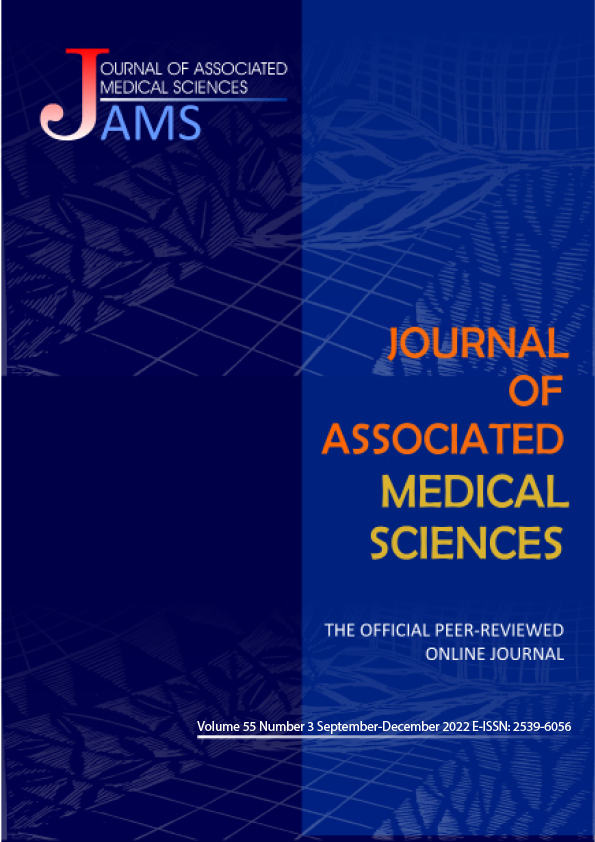Feasibility of inspiratory muscle training to improve pulmonary and respiratory muscle function, and for attenuating sleep apnea symptoms in children and adolescent with obstructive sleep apnea and obesity: Case report
Main Article Content
Abstract
Background: Studies have demonstrated a potential risk of pulmonary and respiratory muscle dysfunction in individuals with obstructive sleep apnea (OSA) and/or obesity. Inspiratory muscle training (IMT) is an adjunct intervention designed to improve respiratory muscle strength, decrease severity of OSA, and to enhance sleep quality in adults with OSA. However, its effects on children with OSA and obesity are still largely unknown.
Objectives: This case report aims to show the feasibility and the effects of IMT on pulmonary and respiratory muscle function and sleep apnea symptoms of children and adolescents with OSA and obesity.
Case description: Four children and one adolescent who were diagnosed with OSA and classified as obesity underwent IMT with training load at 60% of the individual’s maximal inspiratory pressure (MIP) for 12 weeks.
Results: No adverse effects occurred during evaluation and IMT. The participants’ compliance with IMT varied from 77.4% to 100%. After 12-week of IMT, MIP and maximal voluntary ventilation (MVV) increased from baseline, varying from 8.0% to 83.5% and 0.1% to 36.1%, respectively. Scores in the Sleep Related Breathing Disorder-Pediatric Sleep Questionnaire (SRBD-PSQ) tended to decrease rapidly at week 3. Thereafter, participants responded differently toward the end of IMT. Changes in pulmonary function variables were not observed.
Conclusion: Improvements in respiratory muscle strength, endurance, and SRBD-PSQ scores occurred after IMT, suggesting the feasibility of IMT for increasing inspiratory muscle performance and for ameliorating sleep apnea symptoms in children and adolescents with OSA and obesity. However, pulmonary function was unaffected by IMT.
Article Details

This work is licensed under a Creative Commons Attribution-NonCommercial-NoDerivatives 4.0 International License.
Personal views expressed by the contributors in their articles are not necessarily those of the Journal of Associated Medical Sciences, Faculty of Associated Medical Sciences, Chiang Mai University.
References
Bhattacharjee R, Kim J, Kheirandish-Gozal L, Gozal D. Obesity and obstructive sleep apnea syndrome in children: a tale of inflammatory cascades. Pediatr Pulmonol. 2011; 46(4): 313-23. doi: 10.1002/ppul.21370.
Grime C, Tan HI. Sleep disordered breathing in children. Indian J Pediatr. 2015; 82: 945-55. doi: 10.1007/s12098-015-1857-5.
Verhulst SL, Gaal LV, De Backer W, Desager K. The prevalence, anatomical correlates and treatment of sleep-disordered breathing in obese children and adolescents. Sleep Med Rev. 2008; 12: 339-46. doi: 10.1016/j.smrv.2007.11.002.
Isono S. Obesity and obstructive sleep apnoea: mechanisms for increased collapsibility of the passive pharyngeal airway. Respirology. 2012; 17: 32-42. doi: 10.1111/j.1440-1843.2011.02093.x.
Dehlink E, Tan HL. Update on paediatric obstructive sleep apnoea. J Thorac Dis. 2016; 8: 224-35. doi: 10.3978/j.issn.2072-1439.2015.12.04.
Mafort TT, Rufino R, Costa CH, Lopes AJ. Obesity: systemic and pulmonary complications, biochemical abnormalities, and impairment of lung function. Multidiscip Respir Med. 2016; 11: 28. doi: 10.1186/s40248-016-0066-z.
Van Eyck A, Van Hoorenbeeck K, De Winter BY, Van Gaal L, De Backer W, Verhulst SL. Sleep-disordered breathing and pulmonary function in obese children and adolescents. Sleep Med. 2014; 15(8): 929-33. doi: 10.1016/j.sleep.2014.03.024.
Pratanaphon S, Sonsuwan N, Chaimano S, Chandee S, Autkhruea K, Sa-nguanmoo P. Obstructive sleep apnea effects on pulmonary and respiratory muscles function of obese children and adolescents: a preliminary study. Turk Thorac J. 2022; 23(2): 104-8. doi: 10.5152/TurkThoracJ.2021.0115.
Dubern B, Tounian P, Medjadhi N, Maingot L, Girardet JP, Boulé M. Pulmonary function and sleep-related breathing disorders in severely obese children. Clin Nutr. 2006; 25(5): 803-9. doi: 10.1016/j.clnu.2005.12.001.
Hulzebos E, Takken T, Reijneveld EA, Mulder MMG, Bongers BC. Reference values for respiratory muscle strength in children and adolescents. Respiration. 2018; 95(4): 235-43. doi: 10.1159/000485464.
Calik MW. Treatments for obstructive sleep apnea. J Clin Outcomes Manag. 2016; 23(4): 181-92.
Nóbrega-Júnior JCN, Dornelas de Andrade A, de Andrade EAM, Andrade MDA, Ribeiro ASV, Pedrosa RP, et al. Inspiratory muscle training in the severity of obstructive sleep apnea, sleep quality and excessive daytime sleepiness: a placebo-controlled, randomized trial. Nat Sci Sleep. 2020; 12: 1105-13. doi: 10.2147/NSS.S269360.
Kaditis AG, Alonso Alvarez ML, Boudewyns A, Alexopoulos EI, Ersu R, Joosten K, et al. Obstructive sleep disordered breathing in 2- to 18-year-old children: diagnosis and management. Eur Respir J. 2016; 47(1): 69-94. doi: 10.1183/13993003.00385-2015.
Cole TJ, Bellizzi MC, Flegal KM, Dietz WH. Establishing a standard definition for child overweight and obesity worldwide: international survey. BMJ. 2000; 320(7244): 1240-3. doi: 10.1136/bmj.320.7244.1240.
Miller M, Hankinson J, Brusasco V, Burgos F, Casaburi R, Coates A, et al. Standardisation of spirometry. Eur Respir J. 2005; 26: 319-38. doi: 10.1183/09031936.05.00034805.
American Thoracic Society/European Respiratory Society. ATS/ERS statement on respiratory muscle testing. Am J Respir Crit Care Med. 2002; 166(4): 518-624. doi: 10.1164/rccm.166.4.518.
Longlalerng K, Sonsuwan N, Uthaikhup S, Kumsaiyai W, Sitilertpisan P, Traisathit P, et al. Translation, cross-cultural adaptation and psychometric properties of the Sleep-Related Breathing Disordered -Pediatric Sleep Questionnaire for obese Thai children with obstructive sleep apnea. Sleep Med. 2019; 53: 45-50. doi: 10.1016/j.sleep.2018.08.033.
Pratanaphon S, Longlalerng K, Jitmana J, Chaikla K, Nankanya T, Pirunsarn U, et al. Content validity and psychometric characteristics of the Thai translated version of the physical activity questionnaire for children (PAQ-C) and adolescents (PAQ-A). J Assoc Med Sci. 2020; 53(3): 84-91.
Silva JC, Carvalho IE, Dal Corso S, Lanza FC. Reference equation for maximal voluntary ventilation in children and adolescents. Pediatr Pulmonol. 2020; 55(2): 426-32. doi: 10.1002/ppul.24576.
Labeix P, Berger M, Hayet I, Roche F, Hupin D. Impact of inspiratory muscle training on obstructive sleep apnea in coronary patients. the RICAOS study: preliminary results. Eur Respir J. 2018; 52(suppl 62): PA4350. doi: 10.1183/13993003.congress-2018.PA4350.
Hill K, Cecins NM, Eastwood PR, Jenkins SC. Inspiratory muscle training for patients with chronic obstructive pulmonary disease: a practical guide for clinicians. Arch Phys Med Rehabil. 2010; 91(9): 1466-70. doi: 10.1016/j.apmr.2010.06.010.
Romer LM, McConnell AK. Specificity and reversibility of inspiratory muscle training. Med Sci Sports Exerc. 2003; 35: 237-44. doi: 10.1249/01.MSS.0000048642.58419.1E


